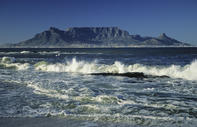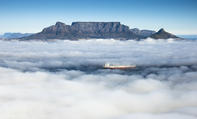Fun and Profit
The demise of Portuguese authority over the high seas in the Cape area facilitated the rise of the great chartered companies of the 17th century.

These corporate entities were affiliated to, but independent of, a ruling monarch, and each had complete control over the territories they chose to occupy in the course of their business interests. At the time, many European monarchs seemed more interested in squabbling among themselves than in developing potentially lucrative trade routes.
Well-connected businessmen thus negotiated expansive charters with their respective monarchs, which gave free reign to even the most rampant corporate imaginations. Armed with these charters, investors set up trading companies with an expansive mandate to exploit new territories for fun and profit.
The Chartered Companies
Since the Chartered Companies took on the financial risk of these endeavours, they were seen as an ideal way to increase a country’s commercial activity without committing too many national resources. So, in essence, the chartered company was a free-wheeling, quasi-political authority, only concerned with the pursuit of profit – much like any modern day corporation.
In practise, however, the company charter was a law unto itself, and the Companies functioned like institutionalised pirates. Accordingly, the British East India Company, formed in 1600, and the Dutch East India Company, formed in 1602, were set up by canny capitalists who wanted all the power of government, with none of the hassles.
The Chartered Companies could raise armies, wage war and impose its own rules on ‘citizens’, who were actually all employees working under contract. It was the kind of business plan that a modern-day CEO would kill for.
A Monopoly on the Spice Trade
The Dutch East India Company, more accurately known as the Vereenigde Landsche Ge-Oktroyeerde Oostindische Compagnie 'VOC', was based in Holland and controlled by the venerable Heeren Sewentien, the Council of 17, or the 17 Lords. This wealthy bunch of cronies were organised into six regional chambers, and functioned as the Company’s board of directors.
They audited expenses, made policy and strategised future corporate endeavours – the most important of which was taking control of the lucrative sea route to the East. To help them achieve this goal, the Dutch government gave the VOC a monopoly on the spice trade in East Asia, which included popular commodities like cloves, nutmeg and pepper.
The King also gave the VOC the power to colonise and subjugate local populations in any way that best suited the interests of the Company. Thus empowered, the VOC were happy to wage a full-scale war against resistant natives who did want to go along with their ambitious plans. In one case, the VOC went so far as to kill the entire population of Banda, in Indonesia. They then brought in slave labour, and turned the whole island into a nutmeg plantation.
A Ruthless Corporation
The Dutch East India Company 'VOC' was clearly a ruthless corporation who would stop at nothing to make a buck for its members so and it was a huge success. In fact, it was so profitable, it helped launch the world’s first stock market in Amsterdam. With plenty of financial support and no discernable conscience whatsoever, the power of the VOC increased exponentially until finally, after 50 years of battling the entrenched stakeholders, it effectively controlled the sea passage to the Indies.
The VOC’s base of operations was at Jakarta in Batavia, modern day Indonesia, but the journey to the Indies was long and conditions on VOC ships were less than wholesome. A refreshment station was therefore needed to supply their ships with fresh water and meat.
A Suitable Depot
The location of such a station was problematic. The Portuguese had chosen Moçambique as its halfway house, and still maintained a presence there. Since the Dutch East India Company didn’t want to make too many waves back in Europe, they decided to leave the Portuguese to their malarial swamps and looked elsewhere for a suitable depot.
Enter the Cape of Good Hope… Table Bay had been intermittently used as an informal anchorage for British, Portuguese, French and Dutch ships almost since it was first discovered. But, thus far, no-one had stepped up to claim it as their own; despite several abortive attempts by over-eager British sailors.
A New Refreshment Station

Then, in 1647, a Dutch ship called Niewe Harlem was wrecked in the bay, and the survivors were forced to live in the lee of Table Mountain for nearly a year before being retrieved. When they finally returned to Holland, the Council asked one of the men, Leendert Jansen, to write up a report on the potential for using Table Bay as the Company’s new refreshment station.
In his ‘Remonstrantie’ to the venerable Heeren XVII, Jansen declared that they had been treated well by the local tribes, the water supply was good and the land was fertile. He wholeheartedly recommended using the Cape of Good Hope for any purposes the Company could devise.
By David Fleminger